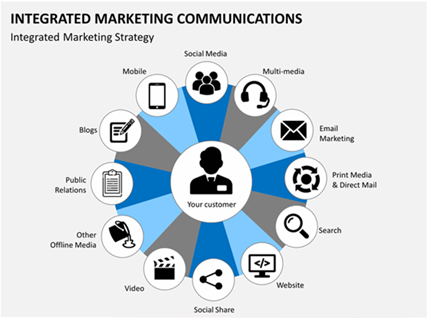Published on July 11, 2019

Benefits of IMC are a lot from different standpoints. One of the most important benefits of IMC is the fact that delivering a consistent message through all marketing media about a brand helps you build a brand recognition. That consistent brand perception leads to develop a strong customer relationship which later turns into customer loyalty.
Another benefit of IMC lies in the fact that it increases the profits because a consistent message has more influence over the customers than other disorganized messages. A unified message has a better chance of making an impression on people who are exposed to hundreds of commercial messages in a day.
IMC also saves money because it removes the duplication of marketing efforts, which can be accepted as another benefit of IMC. In addition, for all the marketing communications, just one agency can be utilized. Therefore, agency fees do not become a big deal anymore. Moreover, using just one agency also saves you more time than using multiple agencies.
All in all, in order to be consistent and trustworthy in marketing promotions, organizations need IMC. IMC helps them build brand recognition by delivering a unified message through different media, increase profits and reduces marketing costs by eliminating the duplication of marketing activities. For example, if you see brands like Nike, Subway, Linked In, Old Spice, Levi Strauss & Co. and many more brands like these who have been amazing in the field of IMC and have sustained and shown drastic changes in their brand growth.
An IMC approach provides benefits at every level of the organization including:
Forming a well-constructed brand strategy is the first step before IMC can be used. Once a brand strategy is formed, an IMC plan can be created to influence perceptions of the brand across all media and channels. If an organization has a corporate brand with sub-brands (product or service, then IMC provides the ability to achieve a consistent corporate branding across all the sub-brands.
The IMC strategy planning process using the zero-based campaign approach, includes identifying the target audience, performing an environmental analysis five-forces analysis and SWOT), and determining the marketing communications objectives. The next steps in the IMC process include developing strategies and tactics, deciding on a budget, implementation, and evaluating the IMC plan’s effectiveness.
The IMC flows from the the mission, vision, and values to the overall business strategy providing the filter to guide every strategic and tactical aspect of the IMC plan. The IMC strategy complements the branding strategy and maintains a consistent message that conveys the right message using the right medium to achieve the pre-defined business goals.
IMC facilitates collaboration and creates synergy across departments or work groups. The increased collaboration leads to reduced bureaucracy and the formation of employee behaviors that lead to business goal attainment. Using IMC offers significant advantages for the company in the form of financial results and the ability to compete at a heightened level with the synergy IMC provides the company.
Posted in: PGDM (AICTE Approved) Admission 2020


Which is Better: MBA or PGDM for Government Jobs?
Published on March 25, 2021
IS PGDM EQUIVALENT TO MBA DEGREE? HOW TO CHOOSE A COURSE?
Published on January 16, 2021
PGDM in Marketing: Career, Jobs, Syllabus, Scope, and Salary
Published on February 24, 2021
WHAT ARE THE CAREER OPPORTUNITIES AFTER PGDM? JOBS AFTER PGDM
Published on January 20, 2021
MBA or PGDM? Which course should you choose?
Published on January 6, 2020